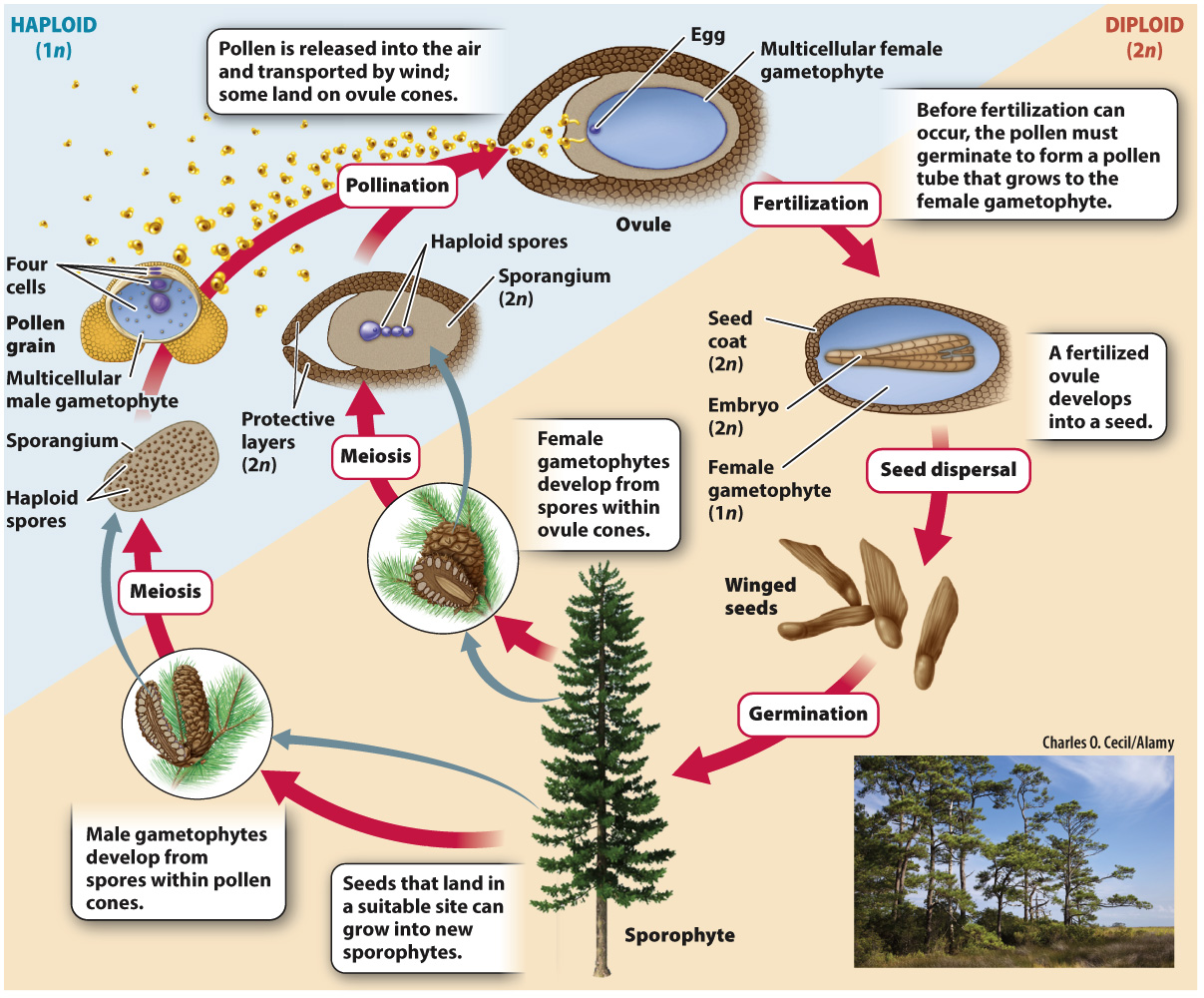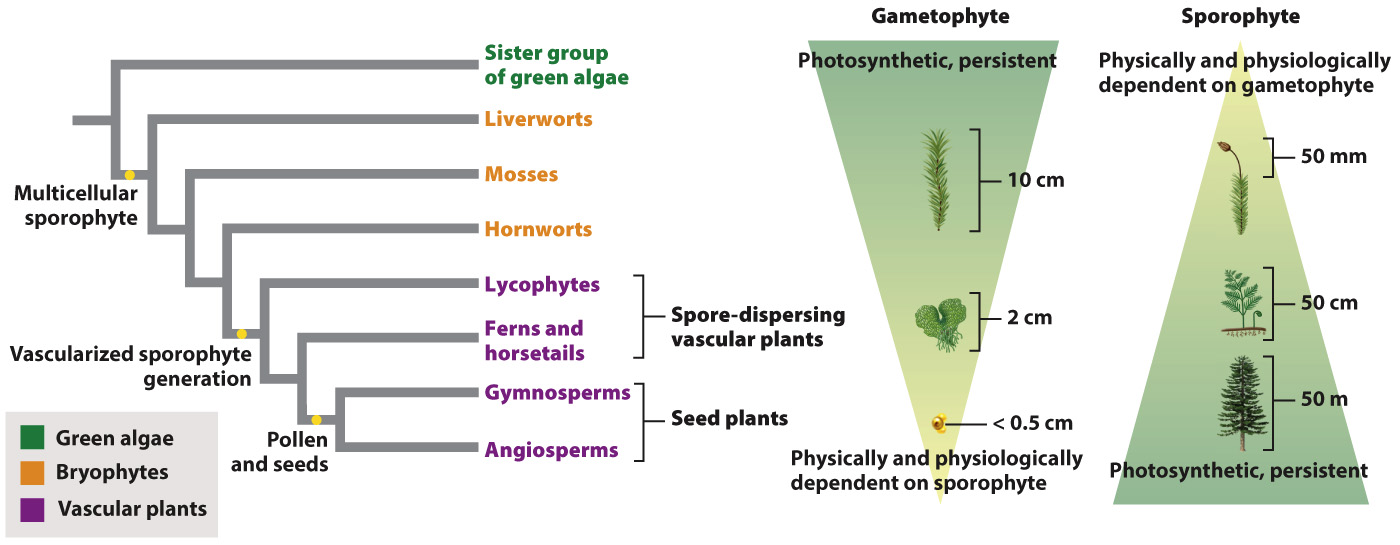Pine trees illustrate how the transport of pollen in air allows fertilization to occur in the absence of external sources of water.
To illustrate how seed plants have freed themselves from a dependence on surface moisture for fertilization, let’s look at the life cycle of a pine tree (Fig. 30.7).

In pines, as in all vascular plants, what we think of as “the plant” is the diploid sporophyte. However, a significant part of the pine’s life cycle—
Ovule cones contain sporangia, each one surrounded by a jacket of protective tissue. Within each sporangium, a single cell undergoes meiosis, producing four haploid spores. Three of these spores degrade, leaving a single functional spore inside the sporangium. This spore is not dispersed, but instead undergoes repeated mitoses to form a multicellular female gametophyte consisting of a few thousand haploid cells, one or more of which differentiate as eggs. The female gametophyte remains attached to the sporophyte as part of the ovule.
Pollen cones are compact shoots with modified leaves that produce sporangia on their surface. Within the sporangia, many cells divide by meiosis to form haploid spores. The haploid spores then divide mitotically to form a multicellular male gametophyte inside the spore wall. In pine, the male gametophyte consists of only four cells at the time the pollen is shed from the parent plant.
In pine, pollen is carried to the ovule by the wind. To reach the egg, however, and penetrate the tissues of the ovule, the pollen must germinate and the male gametophyte produce a pollen tube that grows outward through an opening in the sporopollenin coat. In pines, pollination occurs as much as 15 months before fertilization. In fact, it is the arrival of the pollen that stimulates the development of the female gametophyte. When the female gametes are ready to be fertilized, the male gametophyte’s pollen tube grows to the female gametophyte, attracted by chemical signals. Two sperm, which lack flagella, travel down the pollen tube and one of them fuses with the egg to form a zygote. Fertilization in seed plants thus takes place without the male gametes ever being exposed to the external environment.
In seed plants, the relationship between sporophyte and gametophyte has been reversed completely from that found in bryophytes. The gametophyte, so prominent in mosses, is reduced to a small number of cells that depend entirely on their parent sporophyte for nutrition (Fig. 30.8).

Quick Check 3 How do the male and female gametophyte generations differ in seed plants?
Quick Check 3 Answer
The male gametophyte develops within the spore wall, forming pollen. Following pollination, the male gametophyte produces a pollen tube that grows through the ovule to deliver male gametes to the egg. The female gametophyte grows to fill the entire sporangium and is never dispersed. Seed plant gametophytes are never free-